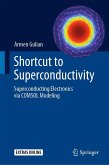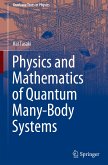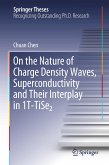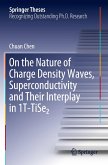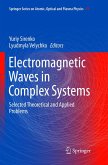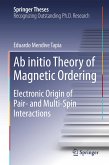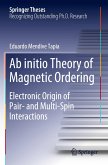This accessible textbook offers a novel, concept-led approach to superconducting electronics, using the COMSOL Multiphysics software to help describe fundamental principles in an intuitive manner.
Based on a course taught by the author and aimed primarily at engineering students, the book explains concepts effectively and efficiently, uncovering the "shortcut" to understanding each topic, enabling readers to quickly grasp the underlying essence. The book is divided into two main parts; the first part provides a general introduction to key topics encountered in superconductivity, illustrated using COMSOL simulations based on time-dependent Ginzburg-Landau equations and avoiding any deeply mathematical derivations. It includes numerous worked examples and problem sets with tips and solutions.
The second part of the book is more conventional in nature, providing detailed derivations of the basic equations from first principles. This part covers more advanced topics, including the BCS-Gor'kov-Eliashberg approach to equilibrium properties of superconductors, the derivation of kinetic equations for nonequilibrium superconductors, and the derivation of time-dependent Ginzburg-Landau equations, used as the basis for COMSOL modeling in the first part.
Supported throughout by an extensive library of COMSOL Multiphysics animations, the book serves as a uniquely accessible introduction to the field for engineers and others with a less rigorous background in physics and mathematics. However, it also features more detailed mathematical background for those wishing to delve further into the subject.
Based on a course taught by the author and aimed primarily at engineering students, the book explains concepts effectively and efficiently, uncovering the "shortcut" to understanding each topic, enabling readers to quickly grasp the underlying essence. The book is divided into two main parts; the first part provides a general introduction to key topics encountered in superconductivity, illustrated using COMSOL simulations based on time-dependent Ginzburg-Landau equations and avoiding any deeply mathematical derivations. It includes numerous worked examples and problem sets with tips and solutions.
The second part of the book is more conventional in nature, providing detailed derivations of the basic equations from first principles. This part covers more advanced topics, including the BCS-Gor'kov-Eliashberg approach to equilibrium properties of superconductors, the derivation of kinetic equations for nonequilibrium superconductors, and the derivation of time-dependent Ginzburg-Landau equations, used as the basis for COMSOL modeling in the first part.
Supported throughout by an extensive library of COMSOL Multiphysics animations, the book serves as a uniquely accessible introduction to the field for engineers and others with a less rigorous background in physics and mathematics. However, it also features more detailed mathematical background for those wishing to delve further into the subject.


